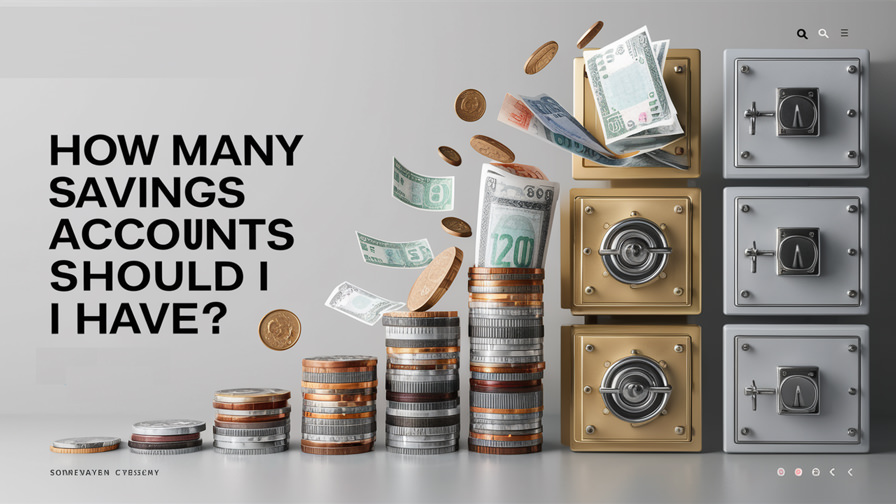In March 2023, Silicon Valley Bank (SVB) was abruptly shut down by the California Department of Financial Protection and Innovation. Based in Santa Clara, California, SVB faced a rapid decline due to significant losses in its investments and a massive withdrawal of deposits. Later that month, First Citizens Bank acquired all deposits and loans of the failed bank.

Bank failures are not unprecedented. Over 550 banks were shut down between 2001 and early 2023. However, SVB’s collapse was particularly significant as it occurred during a period of economic uncertainty in the U.S. and marked the largest bank failure since Washington Mutual in 2008.
Understanding the Fall of Silicon Valley Bank
Key Points:
- SVB Shutdown: Federal regulators closed SVB on March 10, 2023.
- Causes of Failure: Declining investment values, massive depositor withdrawals, and mismanagement were major factors. A Federal Reserve report attributed blame to the bank’s management, regulatory oversight failures, and the impact of social media.
- Aftermath: Federal regulators promised to protect all depositors, even those with funds exceeding the Federal Deposit Insurance Corporation (FDIC) limits. The Federal Reserve also introduced measures to stabilize the banking system, including the Bank Term Funding Program.
- Acquisition: First Citizens Bank purchased SVB’s deposits and loans.
What Was Silicon Valley Bank?
Silicon Valley Bank, a subsidiary of SVB Financial Group, was the 16th largest bank in the U.S., with assets totaling approximately $209 billion as of December 2022. The bank was renowned for serving startups and venture-backed firms, claiming 44% of the venture-backed technology and healthcare initial public offerings (IPOs) in 2022 as clients.
A Brief History of Silicon Valley Bank
SVB was conceived during a poker game by Bill Biggerstaff and Robert Medearis and officially launched in 1983, with Roger Smith as CEO. The bank went public in 1988 and relocated to Menlo Park in 1989 to solidify its presence in the venture capital sector. SVB saw exponential growth during and after the pandemic, climbing from the 34th to the 16th largest U.S. bank between 2019 and 2022.
Why Did Silicon Valley Bank Fail?
SVB’s rapid growth led to a significant influx of deposits and assets. Much of these deposits were invested in Treasury bonds and other long-term debts, which generally have low returns and low risk. However, as the Federal Reserve raised interest rates to combat inflation, the value of SVB’s bonds dropped. Concurrently, many of SVB’s tech-industry customers faced financial difficulties and withdrew their funds.
To meet these withdrawals, SVB sold investments at a loss, incurring a $1.8 billion deficit, which triggered its downfall. Some argue that the rollback of the Dodd-Frank Act, particularly the 2018 change that raised the asset threshold for increased regulatory oversight from $50 billion to $250 billion, played a role in SVB’s failure.
Timeline of the Collapse
March 8: SVB announced a $1.8 billion loss on its bond portfolio and plans to raise $2.25 billion by selling stock. Moody’s downgraded SVB’s ratings.
March 9: SVB’s stock plummeted, and depositors attempted to withdraw $42 billion.
March 10: Trading of SVB’s stock was halted, and federal regulators took over the bank. Insured deposits were assured to be available by March 13.
March 12: Federal regulators guaranteed all depositors, including those with uninsured funds, would be made whole.
March 17: SVB’s parent company, SVB Financial Group, filed for bankruptcy.
March 26: First Citizens Bank acquired SVB’s deposits and loans.
Impact on Depositors and Investors
The FDIC insures deposits up to $250,000 per depositor per bank. However, many SVB accounts held amounts exceeding this limit. In an unprecedented move, the Federal Reserve invoked a systemic risk exception, ensuring all depositors were protected, even those with uninsured funds. However, shareholders and unsecured debt holders of SVB Financial Group were not protected from losses.
Government Response and the Bank Term Funding Program
To prevent further banking failures, the Federal Reserve introduced the Bank Term Funding Program (BTFP) on March 12, 2023. This program offers loans to banks and other deposit institutions to help them meet depositor needs without selling high-quality securities at a loss. The BTFP is set to run until at least March 11, 2024.
What Happens If Your Bank Collapses?
If a bank fails, FDIC insurance protects deposits up to $250,000 per depositor per account category. If no buyer is found for the bank, the FDIC pays depositors directly. Balances exceeding $250,000 may not be fully recovered.
Conclusion
Silicon Valley Bank’s failure underscores the importance of robust risk management and regulatory oversight in the banking sector. While the government stepped in to protect depositors and stabilize the banking system, the event highlighted vulnerabilities that need addressing to prevent future collapses. As always, staying informed and vigilant about your financial institution’s health is crucial for safeguarding your assets.
Willie McClellan is a financial analyst and personal finance expert with over 15 years of industry experience. Holding a Master’s degree in Finance from the University of Chicago, Willie has worked with top investment firms, providing insights on market trends and investment strategies. He is passionate about financial education and regularly contributes to leading financial blogs and magazines. When not working, Willie enjoys hiking and spending time with his family.



